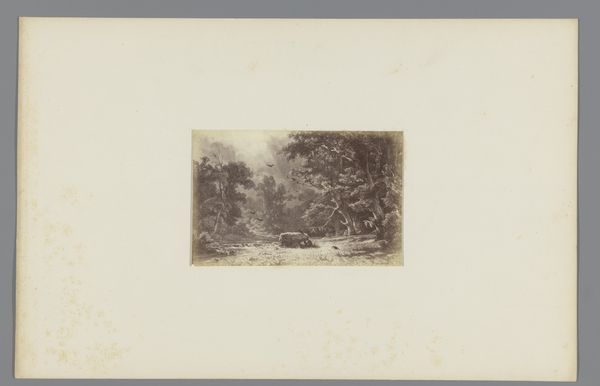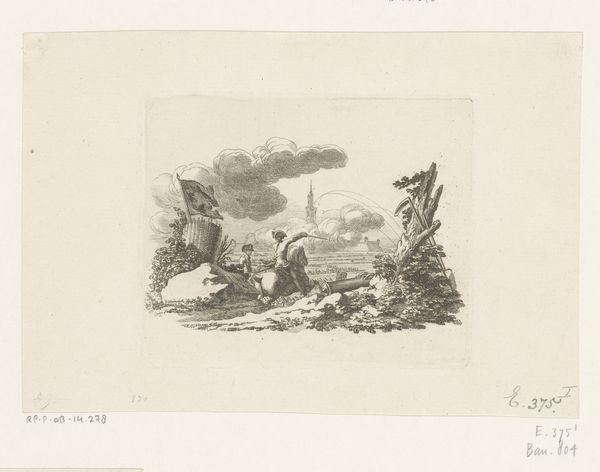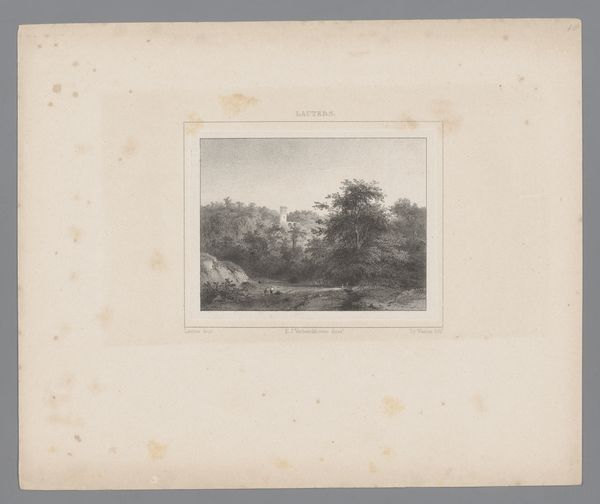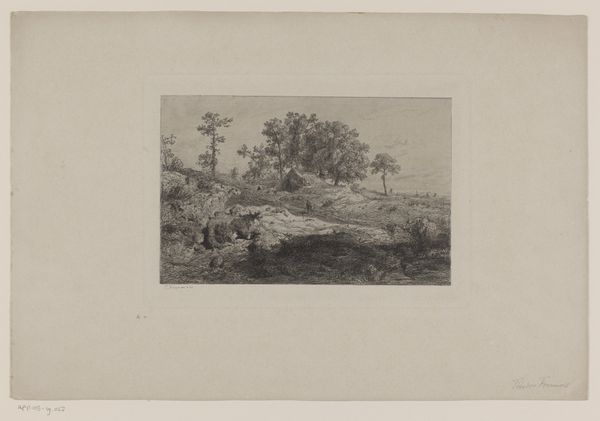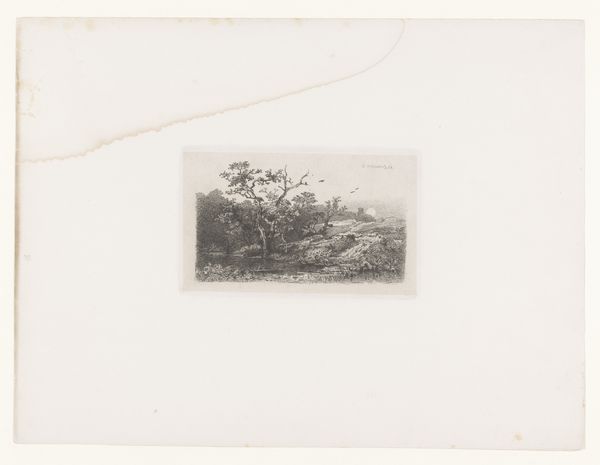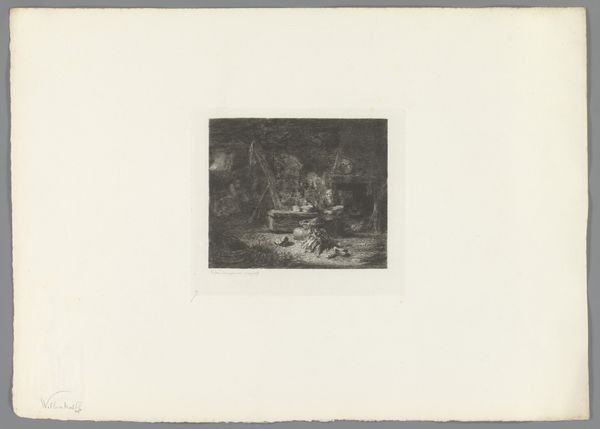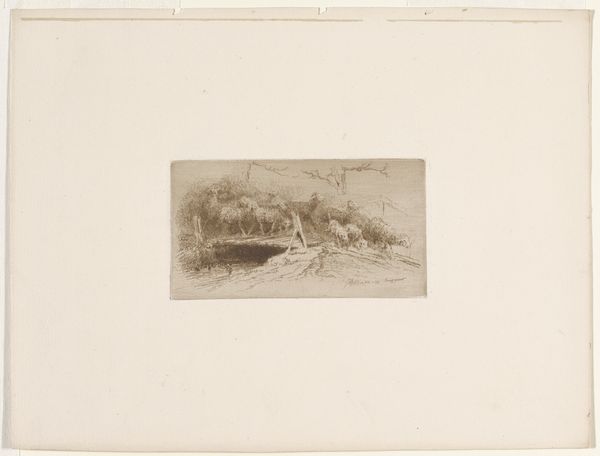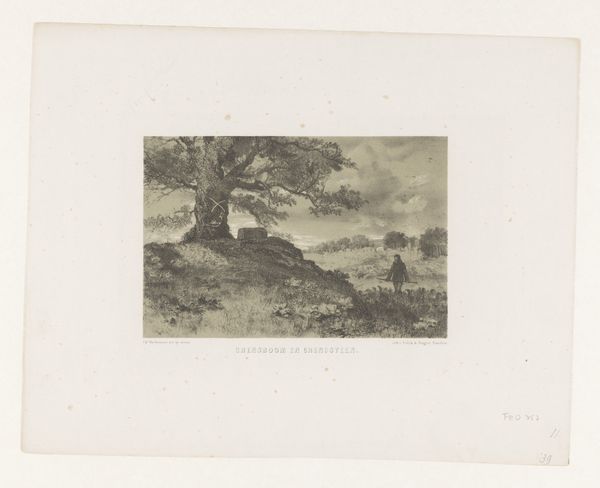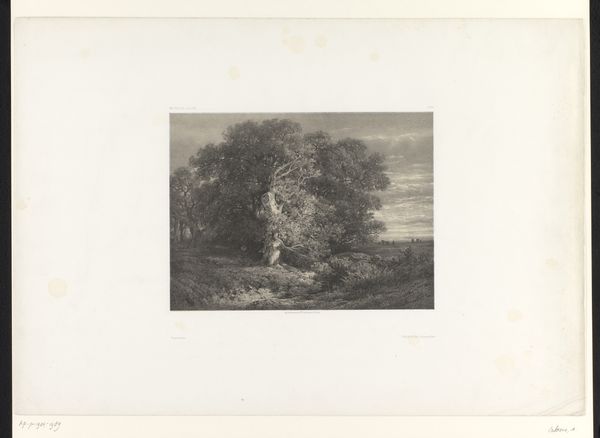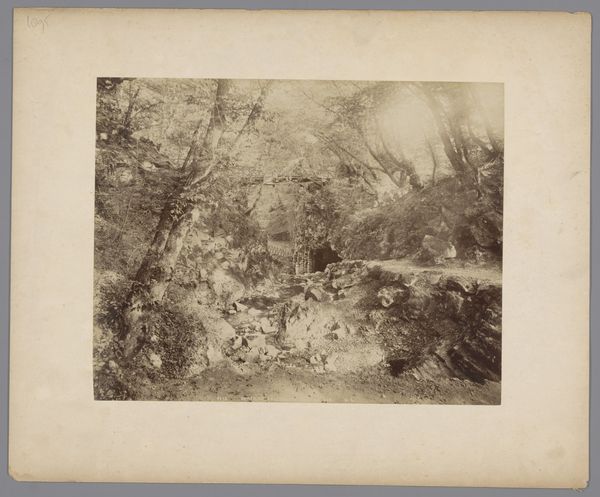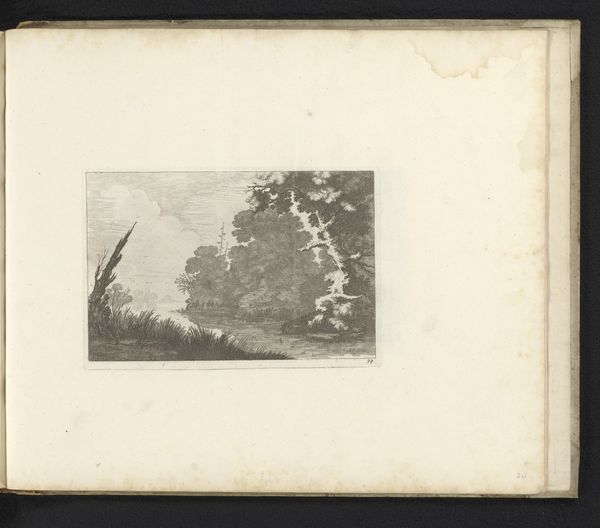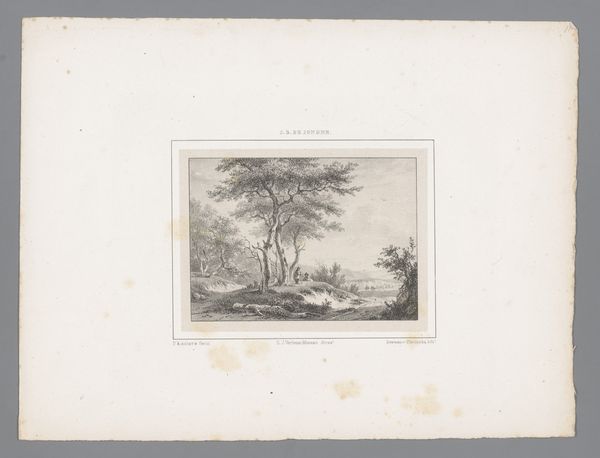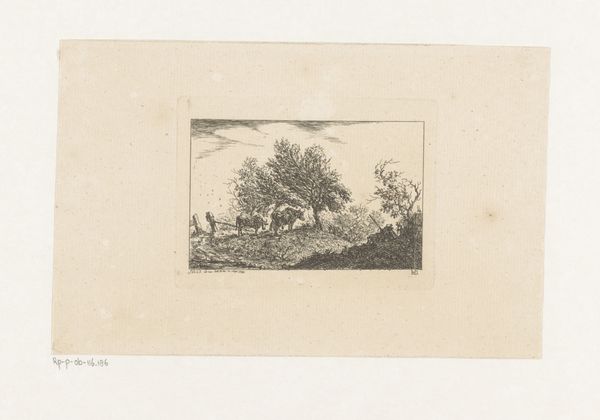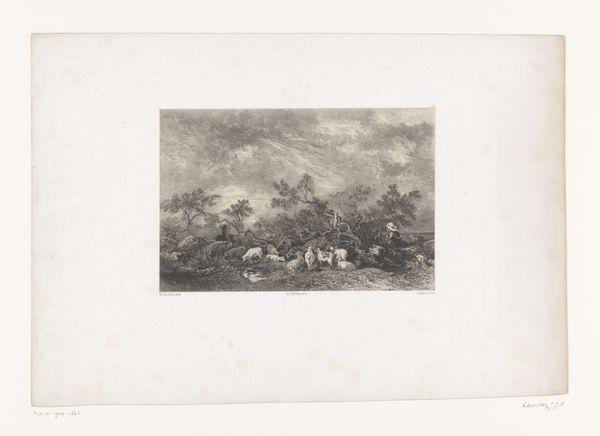
Fotoreproductie van het schilderij 'De reuzen-eik' door Barend Cornelis Koekkoek before 1871
0:00
0:00
Dimensions: height 142 mm, width 181 mm
Copyright: Rijks Museum: Open Domain
Curator: There's a hushed reverence emanating from this photograph, a scene pulled right from a fairytale. It's Barend Cornelis Koekkoek’s "Fotoreproductie van het schilderij 'De reuzen-eik'," predating 1871. Editor: The muted tones give it an air of faded grandeur. You’ve got this small figure walking toward what looks like a portal through some kind of ancient rock formation. I immediately read that lone figure against the backdrop of the giant oak and cave as a commentary on humanity's relationship with nature, especially through the lens of Romanticism, which Koekkoek's work certainly embodies. Curator: Absolutely! A solitary traveler embarks on a quiet pilgrimage. And look, the giant oak almost acts as a natural cathedral. It evokes that overwhelming feeling, that sublime awe nature can inspire—the kind that simultaneously dwarfs and elevates us. I swear I can almost smell damp earth and hear the rustle of leaves. It’s strange to see a painting become a photograph…a layer of removal. Editor: Right, we're experiencing Koekkoek's artistic vision filtered through the technical processes of print and photography, a reproduction that arguably democratizes the image but simultaneously loses something in the translation. Curator: Maybe. I feel as if it amplifies the layers of romantic longing embedded in it. Knowing Koekkoek meticulously sketched the landscape from life, this mediated representation reminds us nature itself can be interpreted, a landscape seen through various prisms of understanding. It is as real or unreal as one is willing to feel it. Editor: True. But in its time, and even now, there is also a history of land ownership to consider in images of majestic landscape such as these. Who has access to the land? Who is welcome in this picture, and who is excluded? These images, while beautiful, aren't always neutral. Curator: A fascinating angle! It invites questions: Whose perspective are we actually beholding? And whose stories remain unseen, obscured by the spectacle of the giant oak? Editor: It really forces us to look beyond the immediate aesthetic appeal, prompting critical engagement with the social and political dimensions. Curator: Thinking of it, my stroll with Koekkoek's picture ends with many more intriguing avenues to explore! Editor: Likewise! A beautiful piece—with so much layered meaning underneath the surface.
Comments
No comments
Be the first to comment and join the conversation on the ultimate creative platform.
